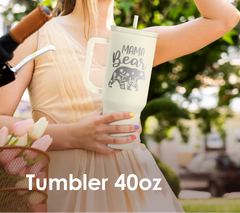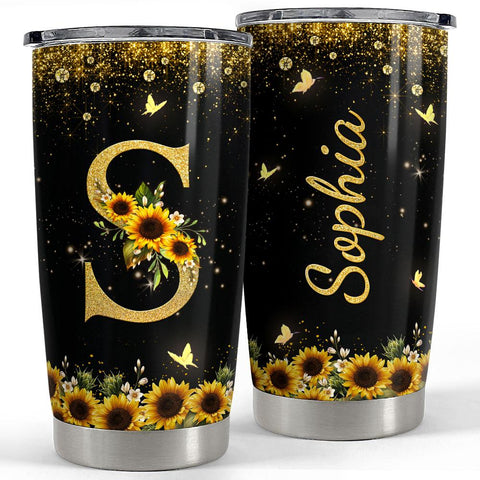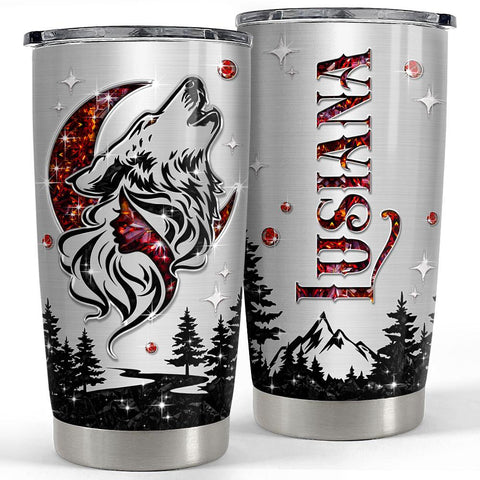180+ Fascinating Christmas Facts to Celebrate the Season
Table of Contents
Christmas facts are a delightful way to deepen your appreciation for the holiday season. As we gather with family and friends, exploring the origins of Christmas can uncover fascinating traditions and myths that have shaped our celebrations. From the history behind beloved customs to quirky trivia that will surprise even the most seasoned holiday enthusiasts, there’s so much to discover.
Join us as we explore interesting facts about the Christmas holiday that will enrich your festive spirit. Get ready to impress your loved ones with fun insights and stories that make this time of year even more magical. Stay with us to uncover the wonders of Christmas!
Fun Facts About Christmas
Get ready to unwrap a sleigh-full of festive knowledge with these fun facts about Christmas. These funny facts about Christmas are sure to spread cheer and spark interesting conversations. So let's explore the merry world of Christmas facts!

- The first recorded Christmas celebration dates back to 336 AD in Rome, marking the birth of a holiday that has grown to be celebrated worldwide.
- Rudolph the Red-Nosed Reindeer was created as part of a department store marketing campaign in 1939, quickly becoming a beloved Christmas character.
- Artificial Christmas trees were originally made from goose feathers dyed green, offering a sustainable alternative to real trees.
- Tinsel was once made from real silver, adding sparkle to Christmas trees, but was later replaced with cheaper materials for easier use.
- Santa’s reindeer are likely to be all female, as male reindeer shed their antlers in winter, making them a fitting choice for the holiday season.
- The world’s largest Christmas gift was the Statue of Liberty, given to the U.S. by France in 1886, representing friendship and goodwill.
- In Germany, finding a pickle ornament hidden on the Christmas tree brings good luck, adding a fun twist to the holiday.
- The Christmas wreath symbolizes eternal life and was originally made from evergreen branches, representing hope and renewal.
- In Poland, spiders and spider webs are considered good luck Christmas decorations, showcasing unique holiday customs.
- "White Christmas" by Bing Crosby is the best-selling single of all time, bringing nostalgia and joy to the holiday season.
>> Pairing Fun Facts About Christmas with christmas jokes turns a fun fact session into something more interactive.
Christmas Facts For Kids
Christmas is a wonderful time of year, filled with joy, laughter, and special traditions that kids love. Learning facts about Christmas for kids can make the holiday even more exciting! Sharing these fun Christmas facts can help children appreciate the magic of the season while enjoying the festivities.

- In the Middle Ages, Christmas was a lively celebration filled with feasting and games, showcasing the joy of the season.
- In Italy, a kind witch named La Befana brings gifts to children on January 6th, making the celebration even more magical.
- Australian kids believe Santa wears board shorts and arrives on a surfboard, showcasing the unique holiday spirit down under.
- In Spain, the Three Kings deliver gifts to children on January 6th, leaving them in shoes as part of the Epiphany celebration.
- Finnish kids think Joulupukki, or Christmas Goat, comes from Lapland to give presents, making the holiday feel special and unique.
- In Wales, people dress up as a horse's skull and go caroling in a tradition called Mari Lwyd, celebrating Christmas in a fun and quirky way.
- In Venezuela, people roller-skate to church on Christmas morning, turning the holiday into a festive and lively event.
- The red and white stripes of a candy cane symbolize the blood and purity of Christ, making it a sweet treat with a meaningful background.
- In many families, wearing matching Christmas pajamas on Christmas Eve has become a fun tradition to celebrate the holiday spirit.
- The song “Silent Night” was composed in Austria in 1818 and has since been translated into over 300 languages, making it a global favorite.
>> Christmas Facts For Kids blend well with Christmas affirmations to bring a fun, yet positive, learning experience.
Santa Claus Facts For Kids
Santa Claus is a beloved figure during the Christmas season, bringing joy and excitement to children around the world. Learning Santa Claus facts for kids can enhance their understanding of this magical character and the traditions surrounding him. Sharing these facts about Christmas holiday helps children appreciate the spirit of giving and kindness that Santa represents.

- The name "Santa Claus" comes from the Dutch word "Sinterklaas," which refers to St. Nicholas and is celebrated on December 6.
- In addition to his elves, many communities have "rent-a-Santas," who dress up as Santa Claus to spread holiday cheer at events.
- On Christmas Eve, Santa travels around the world delivering gifts in just one night by taking advantage of time zones!
- While cookies are popular, Santa also enjoys other treats like pie and hot cocoa left out by families.
- Many believe that Santa has magical powers that allow him to fit down chimneys and know if children have been good or bad.
- Children write letters to Santa each year, sharing their wishes and hopes for Christmas gifts.
- The sound of jingling bells is often associated with Santa's arrival, adding to the excitement of Christmas Eve.
- On Christmas Eve, it's estimated that Santa visits over 390 million homes around the world!
- While it’s hard to determine his exact age, many believe that Santa has been delivering gifts for hundreds of years!
- At its core, Santa Claus embodies the spirit of giving and kindness that makes Christmas special for everyone.
- In various countries, local figures similar to Santa help deliver gifts; for instance, in Germany, it's Christkind who brings presents on Christmas Eve!
>> Santa Claus Facts For Kids work well with santa quotes, as they dive deeper into the magical lore of the man in the red suit.
Facts About Christmas Stockings
Christmas stockings are a cherished tradition that adds excitement to the holiday season. These interesting facts about Christmas stockings are filled with small surprises and treats, making Christmas morning even more magical.

- The tradition of hanging stockings is linked to the story of St. Nicholas, who dropped gold coins into a poor family's stockings to help them.
- The small gifts placed inside stockings are often called "stocking stuffers," and they can include candies, toys, and other fun surprises.
- Traditionally, stockings are hung by the fireplace, but they can also be placed on stair railings or even at the foot of beds.
- Many families create personalized stockings with each member's name, making it easy for Santa to know who gets what!
- In some traditions, children who have been naughty might find a lump of coal in their stocking instead of treats.
- The custom of hanging stockings was popularized in the 1823 poem "A Visit from St. Nicholas," which mentions stockings being filled by Santa.
- Finding an orange in a stocking is a tradition that symbolizes wealth and prosperity, reminiscent of gold coins left by St. Nicholas.
- Stockings come in all shapes and sizes! Some families use oversized stockings to fit more goodies inside.
- Many families enjoy making their own stockings as a fun holiday craft project, decorating them with glitter and festive designs.
- In some households, filling stockings is a family affair where everyone contributes small gifts or treats for one another.
- Traditional Christmas stocking colors are red and white, but they can be found in a variety of colors and patterns today.
- Early stockings were often made from everyday socks before special decorative ones became popular.
- Some families play games involving their stockings, such as guessing what’s inside before opening them on Christmas morning.
- Hanging stockings is part of spreading holiday cheer; they add a festive touch to homes during the Christmas season.
- Stockings symbolize generosity and kindness, reflecting the spirit of giving during the holiday season.
- In Italy, children might hang stockings for La Befana, a kind witch who brings gifts on Epiphany instead of Christmas Eve.
- Stockings were mentioned in various historical documents dating back to the early 1800s as part of Christmas celebrations.
- Common treats found in stockings include candy canes, chocolate coins, and small toys or trinkets that delight kids.
- The tradition of hanging Christmas stockings continues to be an integral part of holiday celebrations around the world today!
>> Facts about Christmas stockings can fit right into your Christmas checklist as you prepare for holiday traditions.
Christmas Fun Facts For Adults
Christmas is a time of joy and celebration, and for adults, it offers a treasure trove of fun facts that enhance the festive spirit. Exploring facts about Christmas holiday can reveal fascinating insights into beloved holiday films, world records, and clever marketing strategies that have shaped the season.

- The first-ever Christmas movie was "Santa Claus," released in 1898, which featured Santa delivering gifts to children.
- The classic film "Miracle on 34th Street" was filmed during the actual Macy's Thanksgiving Day Parade in 1946, blending real-life events with fiction.
- "National Lampoon's Christmas Vacation" has become a holiday staple since its release in 1989, known for its memorable quotes and hilarious antics.
- The tallest Christmas tree ever displayed was in Seattle, Washington, standing at an impressive 221 feet tall in 1950.
- The “Twelve Days of Christmas” originally referred to the festive season starting on December 25th and ending on January 5th, also known as the Epiphany.
- In the Czech Republic, the film "Bad Santa" is known as "Santa is a Pervert," reflecting cultural differences in humor.
- The movie "Elf" used forced perspective to create the illusion of size differences between characters without relying heavily on CGI.
- Originally intended to have a laugh track, "A Charlie Brown Christmas" was saved from this fate thanks to creator Charles Schulz's insistence on keeping it authentic.
- One-third of the top 20 highest-grossing films are released during the holiday season, showcasing how lucrative Christmas marketing can be.
- "The Nightmare Before Christmas" originally started as a poem and was pitched as a TV special before becoming a feature film.
- Paul McCartney earns approximately $400,000 each year from his song “Wonderful Christmastime,” which is often considered one of the worst songs ever recorded.
- "The Polar Express" used motion capture technology to create realistic character movements, making it one of the first animated films to do so effectively.
- Dr. Seuss's "How the Grinch Stole Christmas!" has been adapted into multiple films and specials since its publication in 1957, solidifying its place in holiday culture.
- The first known use of the term "Winter Wonderland" in relation to Christmas can be traced back to the song "Winter Wonderland," which was written in 1934.
>> When planning holiday events, Christmas fun facts for adults make a great icebreaker for Christmas party activities for adults.
Facts About Christmas Trees
Christmas trees are a beloved symbol of the holiday season, adorning homes and public spaces with their festive charm. Exploring the fascinating Christmas fun facts about trees can deepen our appreciation for these evergreen wonders and the traditions they represent. Let's explore facts about Christmas trees that will add to your holiday knowledge!

- The modern Christmas tree tradition is believed to have started in Germany in the 16th century when families began decorating trees with homemade ornaments, candles, and sweets.
- The first recorded instance of a decorated Christmas tree was in 1510 in Latvia, where a pine tree was adorned with roses and placed in the town square.
- While real trees are often preferred for their fragrance and natural beauty, artificial Christmas trees have become increasingly popular for their convenience and reusability.
- There are over 15,000 Christmas tree farms in the United States, producing around 25 to 30 million real Christmas trees annually for the holiday season.
- In some cultures, it is customary to decorate the Christmas tree on Christmas Eve, while in others, the tree is adorned as early as the beginning of Advent.
- The first Christmas ornaments were made from fruit and nuts, but today they come in countless shapes, sizes, and materials, reflecting personal styles and traditions.
- In some countries, like Italy, a tree is often accompanied by a nativity scene, while in other cultures, like Mexico, trees may be decorated with bright colors and piñatas.
- In the past, some communities enacted laws against cutting down trees for Christmas, leading to the creation of tree farms to supply the growing demand.
- Major cities around the world hold grand tree lighting ceremonies during the holiday season, attracting thousands of visitors and signifying the start of festive celebrations.
- In some cultures, particularly in Eastern Europe, upside-down Christmas trees are used as a symbol of the Holy Trinity.
- In 2018, astronauts aboard the International Space Station celebrated Christmas by hanging ornaments on a small tree, bringing holiday cheer to the cosmos.
- In some cultures, it is customary to place gifts beneath the tree, symbolizing the gifts brought to Jesus by the Wise Men.
- The tradition of using electric lights on Christmas trees began in the early 1900s, with the first set of electric tree lights created by Edward H. Johnson in 1882.
- Many people believe that the Christmas tree holds magical qualities, with some traditions suggesting that wishes made while decorating can come true.
- Tree skirts and toppers have become essential decorative elements, serving not only aesthetic purposes but also to catch fallen needles and conceal the tree stand.
- The sight of snow-covered Christmas trees is often depicted in holiday cards and movies, evoking a classic winter wonderland atmosphere.
- The evergreen nature of Christmas trees symbolizes eternal life, making them a poignant reminder of hope and renewal during the winter months.
>> As you decorate your tree, pairing facts about Christmas trees with Christmas ornament quotes adds meaning to each ornament placed.
Facts About Christmas Songs
Christmas songs have become a staple of the holiday season, filling the air with festive cheer and nostalgia. From ancient carols to modern holiday hits, these song facts about Christmas holiday capture the spirit of the season and are enjoyed worldwide. If you're interested in the origins of Christmas music, these Christmas facts will make you appreciate those catchy tunes even more.

- Written in 1857 by James Lord Pierpont, "Jingle Bells" was meant to celebrate Thanksgiving, not Christmas.
- "Jesus Refulsit Omnium," written by St. Hilary of Poitiers in the 4th century, is considered one of the oldest Christmas carols still recognized today.
- "Jingle Bells" was the first Christmas song broadcast from space during NASA’s Gemini 6 mission in 1965.
- Before becoming a famous Christmas song in 1949, "Rudolph the Red-Nosed Reindeer" was created as a children's book in 1939.
- "Do They Know It’s Christmas?" by Band Aid, released in 1984, was a charity single to help with the famine in Ethiopia, but it sparked controversy for its depiction of Africa.
- Since its release in 1994, this song has become one of the most popular modern Christmas songs, frequently topping holiday charts around the world.
- Each gift in "The Twelve Days of Christmas" has been interpreted as a coded reference to religious principles, though many consider this a Christmas myth.
- The famous French carol "O Holy Night" was recorded in 1902 by Enrico Caruso, making it one of the earliest recorded Christmas songs.
- Popular carols like "Silent Night" and "O Tannenbaum" have been translated into multiple languages, bringing festive joy to various cultures.
- Released in 1950, "Frosty the Snowman" became an instant Christmas classic, telling the heartwarming tale of a snowman who comes to life.
- Released in 1957, Elvis Presley’s Christmas album remains one of the best-selling Christmas records of all time.
- This comedic holiday song, released in 1979, quickly became a quirky Christmas tradition for families looking for a good laugh.
- While "Baby, It’s Cold Outside" is considered a holiday classic, it has been criticized in recent years for its questionable lyrics.
- First released in 1952, this playful song sparked controversy from religious groups for its suggestive nature, but it remains a popular holiday tune.
- This dramatic Christmas song was originally a Ukrainian folk chant called "Shchedryk" and was adapted into a Christmas carol in the early 20th century.
- Composed in 1941, "Little Drummer Boy" tells the story of a poor boy who plays his drum for baby Jesus and has become a classic Christmas tale.
- Dating back to the 16th century, this traditional English carol was sung by carolers in exchange for treats like figgy pudding.
- Eartha Kitt’s 1953 hit "Santa Baby" became a sultry Christmas favorite, adding a playful twist to the traditional holiday song lineup, asking Santa for extravagant gifts in a flirtatious way.
- Released in 1958 and performed by Brenda Lee, this upbeat tune quickly became a rock 'n' roll Christmas classic.
- Despite its melancholic lyrics, "Last Christmas" has become one of the most beloved holiday songs since its release in 1984, regularly making a return to Christmas charts.
- This traditional carol was written by Charles Wesley in 1739 and originally had a slower, more somber melody before being updated to the joyful version we know today.
- Studies have shown that Christmas music in stores during the holiday season can increase sales, as the festive atmosphere encourages shoppers to spend more.
- This Christmas carol is based on the story of a 10th-century duke who was known for his generosity and compassion during the Feast of Stephen, celebrated on December 26th.
>> When romance meets tradition, Christmas in love quotes combined with facts about Christmas songs can set a heartfelt tone.
Facts About Christmas Gifts
Christmas gifts are a significant part of holiday traditions worldwide, symbolizing love, generosity, and celebration. These interesting facts about Christmas will offer insights into the origins of gift-giving during this festive season and the traditions that continue to shape holiday shopping today.

- Early Romans celebrated Saturnalia, a December festival where gifts like candles and small figurines were exchanged, influencing Christmas gift traditions.
- The Statue of Liberty, given by France to the U.S. in 1886, is considered the largest Christmas gift in history, symbolizing friendship and freedom.
- Black Friday, the day after Thanksgiving, has become synonymous with the start of Christmas shopping, offering significant discounts on gifts.
- The idea of "Secret Santa" originated in Scandinavia and has become a popular way for friends, families, and colleagues to exchange anonymous gifts during the holidays.
- The practice of wrapping gifts dates back to the early 20th century, with Hallmark popularizing decorative wrapping paper in 1917 to make presents more festive.
- Tickle Me Elmo, a plush toy that laughs when squeezed, became the must-have Christmas gift of 1996, sparking a frenzy of demand worldwide.
- In recent years, gift cards have become one of the most popular Christmas gifts, allowing recipients to choose their own presents.
- A survey found that nearly one-third of people admit to regifting unwanted Christmas presents, turning something they didn’t need into a gift for someone else.
- The tradition of hanging stockings by the fireplace for Santa to fill comes from a legend about Saint Nicholas, who helped a poor family by secretly filling their stockings with gold.
- Over 60% of pet owners in the U.S. buy Christmas gifts for their pets, making pet toys and treats a growing part of holiday shopping.
- January is often dubbed "National Returns Day," as millions of unwanted Christmas gifts are returned to stores after the holiday season.
- Handmade gifts, from knitted scarves to baked goods, are becoming more popular as thoughtful, personal Christmas presents that add a special touch.
- The custom of placing gifts under the Christmas tree became common in the 19th century, coinciding with the rise of decorated trees in homes.
- Despite being considered a joke, socks and underwear remain one of the most commonly gifted items during Christmas.
- In some cultures, certain gifts are considered bad luck; for example, knives or sharp objects are avoided in many countries as they are said to "cut" the relationship.
- With the growth of e-commerce, over 50% of holiday shopping is now done online, making it easier for people to buy and send Christmas gifts.
- Custom gifts, like engraved jewelry or personalized mugs, have become increasingly popular as people look for more meaningful, unique presents.
- Many people choose to give to charities during the holiday season, donating either in the name of others or as part of alternative gift-giving practices.
- With the rise of eco-consciousness, more people are opting for sustainable and reusable gifts, such as handmade items or experiences rather than physical presents.
- For some, Christmas is an opportunity to splurge on high-end items like designer bags, watches, or even cars, making luxury gifts a major part of the holiday economy.
- Christmas gift traditions vary around the world, with some countries exchanging gifts on Christmas Eve, while others, like Spain, wait until January 6th for the arrival of the Three Kings.
>> Facts about Christmas gifts can make your thank you note for Christmas gift more interesting.
Myths About Christmas
Christmas is a holiday filled with traditions and stories, but not everything we associate with this festive season is rooted in fact. Many Christmas myths have been passed down through generations, often blurring the lines between history and legend.

1. Myth: Christmas Started with Christ's Birth
Contrary to popular belief, the celebration of Christmas didn’t begin immediately after Christ's birth. The holiday was officially recognized in the 4th century, long after Christianity’s spread.
2. Myth: Santa Claus Lives at the North Pole
The concept of Santa Claus living at the North Pole was popularized in the 19th century by American writers. In earlier versions, Saint Nicholas was thought to reside in different European regions.
3. Myth: The Origins of Christmas Trees Date to Ancient Rome
While many think Christmas trees come from Roman traditions, they actually originate from 16th-century Germany, where people decorated trees to celebrate the season.
4. Myth: Rudolph is an Ancient Part of Christmas
Rudolph the Red-Nosed Reindeer was introduced in 1939 as part of a Montgomery Ward advertising campaign, making him a modern addition to Christmas folklore.
5. Myth: Candy Canes Are a Religious Symbol
Many think candy canes were designed with religious symbolism in mind, but they were originally made simply as sweet treats, with no special religious significance.
6. Myth: Christmas Was Always Celebrated in December
Some cultures historically celebrated Christmas in January, especially in areas where the Orthodox Church observed Christmas later due to different calendars.
7. Myth: The Christmas Feast Originated with the Nativity
While feasting is a central part of modern Christmas, it actually stems from winter solstice celebrations in pre-Christian times, where people gathered to celebrate the end of the dark days.
8. Myth: The Wise Men Were Kings
Nowhere in the Bible does it say the Wise Men were kings. This is a later addition to the story, stemming from interpretations in Christian art and literature.
9. Myth: The Yule Log Tradition is Christian
Yule logs, now associated with Christmas, actually come from Norse mythology, where they were burned to honor gods and celebrate the winter solstice.
10. Myth: Christmas was Always a Quiet Holiday
In medieval times, Christmas was often a rowdy, raucous celebration filled with feasts, games, and merrymaking, vastly different from the quieter modern version.
11. Myth: Santa’s Elves Were Always Part of the Story
The idea of Santa’s elves is relatively recent, emerging from 19th-century American culture. Early depictions of Saint Nicholas didn’t include any helpers.
12. Myth: Christmas Celebrations Were Always Legal
During the 17th century, Christmas celebrations were banned in parts of England and the U.S., particularly by Puritans, who viewed the holiday as too secular.
13. Myth: The Twelve Days of Christmas Refer to Shopping
The "Twelve Days of Christmas" originally referred to the period between Christmas Day and Epiphany, not a time for extended gift-giving or shopping.
14. Myth: Every Country Celebrates Christmas on December 25th
Several countries, including Russia and Ethiopia, celebrate Christmas in January due to differences in the Julian and Gregorian calendars.
15. Myth: The Poinsettia Is an Ancient Christmas Flower
The poinsettia became associated with Christmas in the 19th century when an American ambassador brought the flower to the U.S. from Mexico. It has no ancient ties to Christmas.
16. Myth: Christmas Caroling is a Long-Standing Christian Tradition
The tradition of Christmas caroling has pre-Christian origins and was once part of pagan celebrations of the winter solstice before becoming a Christian custom.
17. Myth: Eggnog is a Traditional American Christmas Drink
While eggnog is popular in the U.S., its origins can be traced back to medieval Britain, where it was made with ale and milk and served during winter feasts.
18. Myth: Christmas Shopping is a Modern Phenomenon
The commercial aspect of Christmas began to grow during the 19th century, long before modern-day Black Friday sales, as shops started marketing festive gifts and treats.
19. Myth: Saint Nicholas and Santa Claus Are the Same
While Santa Claus was inspired by Saint Nicholas, the modern version we know today has been shaped by centuries of folklore, commercialism, and pop culture, particularly in the U.S.
20. Myth: The Original Santa Was Fat and Jolly
Early depictions of Saint Nicholas portrayed him as a lean figure. The image of Santa as a rotund, jolly man didn’t become popular until the 19th century.
>> The holiday season is filled with myths, and Christmas quotes combined with these myths can create a deeper understanding of the season.
Christmas Facts – Food And Drink
Christmas is a festive season filled with delightful food and drink traditions that vary across cultures. Understanding these customs can enhance your holiday experience and provide insight into the origins of Christmas celebrations. Here, we explore interesting facts about Christmas food and drink that highlight the diversity and creativity behind this beloved holiday.

- Children often leave cookies and milk out for Santa on Christmas Eve as a way to thank him for delivering gifts.
- Early mince pies contain meat along with fruits and spices. This tradition dates back to medieval times when they were made to celebrate the harvest season.
- In 1647, the English Parliament passed a law making it illegal to eat mince pies on Christmas Day, highlighting the quirky laws of the past.
- In Japan, eating KFC for Christmas has become a popular tradition since the 1970s due to successful marketing campaigns, adding a unique twist to the holiday feast.
- On average, people consume over 7,000 calories on Christmas Day, significantly exceeding the daily recommended intake.
- Fruitcake was originally designed to last for an entire year, as it was made with preserved fruits and alcohol.
- Brussels sprouts have become a staple side dish for Christmas dinner, with the industry worth around £650 million annually
- In medieval England, peacock was often served at Christmas feasts before turkey became popular in the 16th century.
- Animal crackers were originally created as a Christmas treat in 1902, designed to hang on trees.
- Chocolate coins are linked to St. Nicholas's tradition of giving coins to the poor, making them a festive treat today.
- The term "sugar plums" refers to various dried fruits coated in sugar rather than actual plums.
- In Australia, many celebrate Christmas with barbecues due to the summer heat rather than traditional roasts.
- The Yule log tradition originates from ancient Druid customs where burning a log symbolized warmth and good fortune for the coming year.
- In Poland, families traditionally feast on carp during their Christmas Eve dinner as part of their twelve-course meal.
- Cranberry sauce has been served at Thanksgiving since colonial times but became a popular addition to Christmas dinners later on.
- The custom of making gingerbread houses started in Germany during the early 19th century after the publication of Hansel and Gretel by the Brothers Grimm.
- Crackers were invented in the 1840s by Tom Smith as a way to add excitement to holiday meals; they contain small gifts and jokes inside.
- Hot chocolate was first enjoyed by ancient Mesoamericans who made it from cacao beans mixed with spices and water long before it became sweetened and popularized in Europe.
- Different countries have unique dishes for Christmas; for instance, Italians enjoy "Feast of the Seven Fishes," while Mexicans celebrate with tamales.
- The tradition of serving ham at Christmas dates back centuries; it was often chosen because it could be prepared ahead of time and served cold or hot.
- Warm spiced cider is a traditional drink during the holidays in many cultures; it has roots in ancient Roman celebrations where spiced wine was served.
- Families often gather to stir their Christmas pudding mixture together while making wishes; this custom is believed to bring good luck for the year ahead.
- In some cultures, special teas are brewed during Christmas celebrations that include spices such as cinnamon and cloves to enhance warmth and flavor during winter festivities.
>> Christmas Facts – Food And Drink alongside fun christmas activities turn dining into an engaging experience.
Odd Christmas Facts
While many of us are familiar with the classic Christmas traditions and stories, there are some lesser-known and downright odd facts about this beloved holiday. Join us as we explore the strange and forgotten corners of the origins of Christmas and uncover the odd truths behind some of our most cherished traditions.

- From 1659 to 1681, celebrating Christmas was outlawed in the Massachusetts Bay Colony due to Puritan beliefs.
- France gifted the U.S. the Statue of Liberty on Christmas Day in 1886, one of the largest Christmas presents ever given.
- In the early 1600s, people in Germany would use strands of real silver to decorate their trees.
- Traditionally, the Yule log was a large, real log burned in homes during the 12 days of Christmas.
- Invented by a London confectioner in 1847, these fun party favors were originally designed to hold sweet treats.
- Many Christmas songs have roots in pre-Christian celebrations, where people would sing and dance in honor of the winter solstice.
- Thanks to a successful KFC marketing campaign in the 1970s, it’s become a tradition for many Japanese families to order KFC on Christmas Eve.
- In Victorian England, sending Christmas cards became a way to demonstrate social standing and etiquette.
- According to legend, mistletoe was the plant that killed the Norse god Baldur, and kissing under it became a way to honor his resurrection.
- It is widely believed that the tradition of Christmas trees started in 16th-century Germany, and was later popularized by Queen Victoria.
- Puritans believed it promoted drinking and excess, so they restricted its consumption.
- Some historians suggest that early Christians picked December 25 as the date to coincide with the pagan festival of Saturnalia, making it easier to convert people to Christianity.
>> Strange but true trivia about Christmas fits perfectly with funny Christmas quotes, making for a festive blend of humor and surprise.
Conclusion
In conclusion, exploring interesting Christmas facts enriches our understanding of this cherished holiday and enhances our celebrations. From the surprising origins of Christmas to the delightful myths that surround it, these insights add a layer of joy to our festivities.
As you gather with loved ones, consider sharing some of these Christmas fun facts to spark conversations and inspire laughter. So, as you prepare for the celebrations ahead, let these valuable insights guide you in appreciating the enchanting spirit of Christmas and all it represents.
Related Products
Frequently Asked Questions
What Is An Unusual Christmas Fact?
1/ In Japan, it's a tradition to eat KFC for Christmas dinner.
2/ Spider web decorations are common on Ukrainian Christmas trees.
3/ In Catalonia, Spain, the Caga Tió (a hollowed log) is "fed" and then beaten with sticks to poop out presents on Christmas Day.
What Are 5 Fun Facts About Christmas In England?
1/ Boxing Day, the day after Christmas, is a public holiday in England.
2/ The Royal Family traditionally attends a Christmas Day church service at St. Mary Magdalene Church in Sandringham.
3/ Christmas crackers, paper tubes containing small gifts and jokes, are a popular English tradition.
4/ Mince pies, despite their name, are sweet treats filled with dried fruits and spices.
5/ The Queen's Christmas broadcast has been a tradition since 1932, first on radio and later on television.
What Are 5 Facts About Christmas?
1/ December 25th was chosen as Christmas Day in the 4th century by Pope Julius I.
2/ The first artificial Christmas tree was made in Germany, using dyed goose feathers.
3/ "Jingle Bells" was originally written as a Thanksgiving song.
4/ Santa Claus is based on the real-life St. Nicholas, a Christian bishop who lived in the 4th century.
5/ The tradition of hanging stockings comes from a legend about St.
6/ Nicholas helping a poor family by dropping gold down their chimney.

















